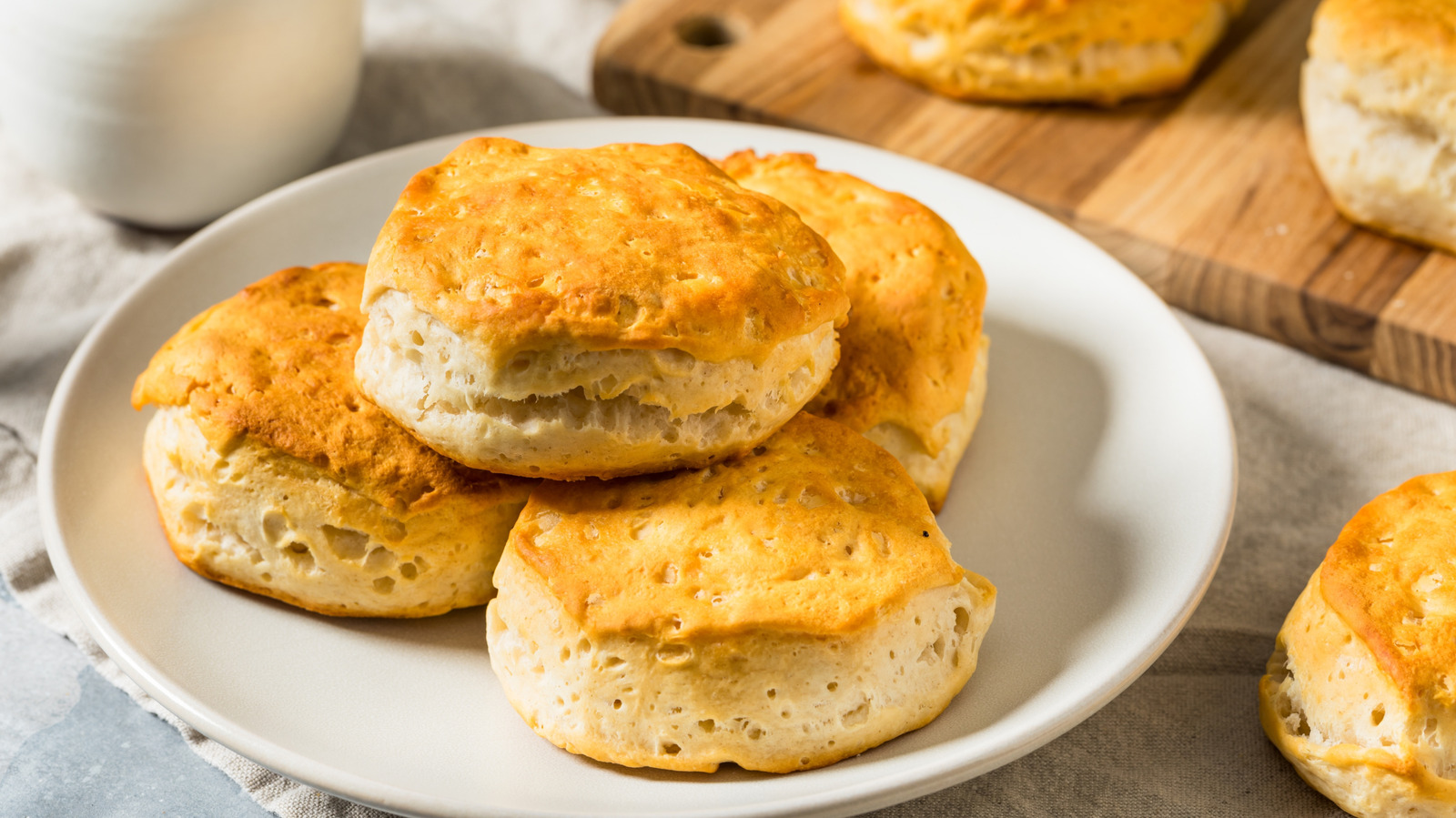
""Self-rising flour is your shortcut to biscuit success," Joy Wilson, the pro baker and cookbook author behind Joy The Baker, told Tasting Table. According to Wilson, since self-rising flour is typically made of soft wheat flour that already contains leavening agents (usually baking powder) and salt, it gives your biscuits what she describes as a "tender crumb, consistent rise, [and] fewer measuring cups.""
"Soft wheat flour in most self-rising flours is composed of about 8.5% protein, which is less than hard wheat flours (usually 10 to 14% protein), best for bread-baking and developing structural integrity via gluten and yeast. When used in more delicate bakes like biscuits or cakes, a softer wheat plus leavening gives you the fluffy, light texture you need, without being too heavy or dense."
Self-rising flour contains soft wheat plus leavening agents (usually baking powder) and salt, producing a tender crumb and consistent rise while reducing measurement steps. Chemical leaveners such as baking soda or powder are essential for puffed buttermilk biscuits with tender interiors. Soft wheat typically contains about 8.5% protein, lower than hard wheat (10–14%), so it limits gluten development and prevents heaviness. Recipes using all-purpose flour require added baking powder and salt. Combining soft self-rising flour, liquid dairy, small cold pieces of butter, and careful dough handling yields fluffy, light biscuits that stand up to toppings like gravy.
Read at Tasting Table
Unable to calculate read time
Collection
[
|
...
]